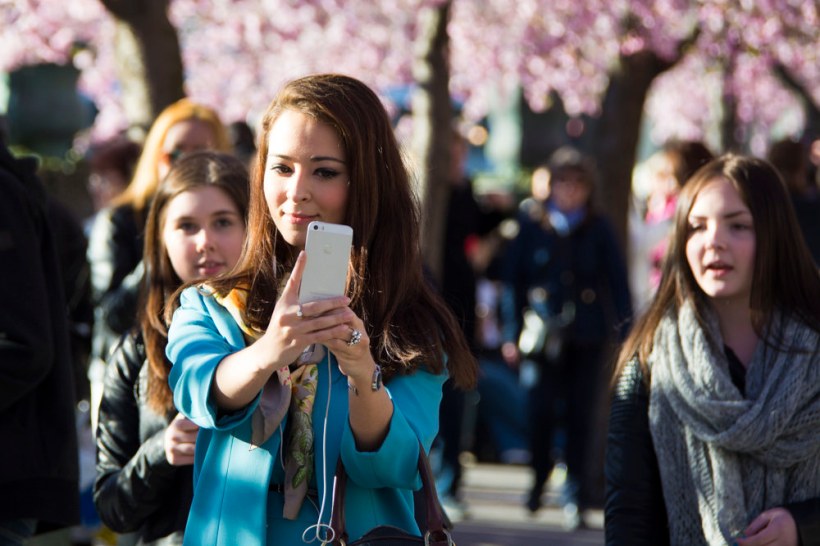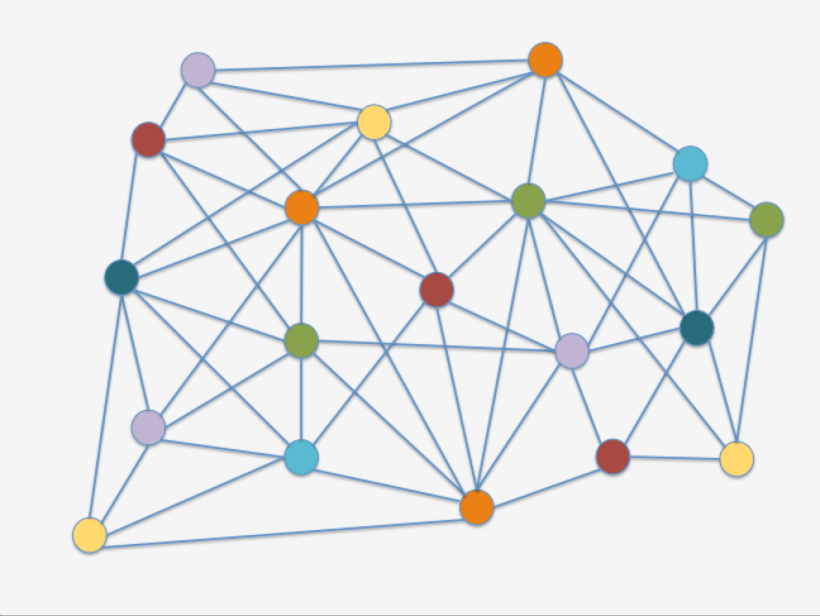Instead of wrapping up 2015 I decided to make a list of topics that will get special attention from me in 2016. I don’t mention specific methods or technologies like AR, VR, Big Data, mobile solutions, Makerspaces, 3D-printing, etc. Instead I look at a few areas that are essential for digital transformation. To merge analogue and digital work practice presents the biggest challenge for museums in 2016, and if done successfully will enable the transition towards the postdigital museum.
(Ed. Jan. 12, extending section on ecosystem, Jan. 15 adding to last section The Big Challenge, Jan. 19 link to HBR).
Mapping the visitor ecosystem – and walking the last mile
Where physical meets digital and paying attention to the last mile: Mapping (and understanding) the visitor experience, and the ecosystem in which the visitor encounters the museum, will move museums one step towards the postdigital realm. As the visitor experience now has to be delivered through multiple channels in a coherent and relevant way, digital and physical must be considered as one:
”Understanding visitor journey also means understanding that a visitor’s experience doesn’t start and end with a physical visit to the Museum. The visitor’s experience starts before they arrive, exists during the visit and extends after they leave. It starts with anticipating, planning and discovering. The experience doesn’t end when the visitor leaves.Thinking about extending the visitor journey with digital channels also requires understanding where your visitors physically are at various stages of the journey, and the digital channels and content types that make the most sense at each stage. A journey may comprise many digital channels, designed to fit specific stages and information needs and types and contexts. They do not expect multiple digital experiences, but one seamless experience with information that hands off from one channel to another and that makes sense for what they need at each stage. Visitors expect information when they want it, how they want it, and specific to the purpose.”
Catherine Devine, The Museum Digital Experience: Considering the Visitor Journey
In this effort to embrace and to deliver the omni-channel experience, an experience that might not ever involve a visit to the gallery space, museums will need to re-think organizational structures and competences. They will have to move towards multi competence teams that master digital as well as physical spaces as well as social media, storytelling and extraordinary user experience design. In this team educators have to be involved.
And most important, mapping the ecosystem will identify the last mile, the end of the museum supply chain, where the visitor (or user) experiences the museum. ”While systems of records are key as they form the backbone of information and data activation, systems of engagement and the last mile of the information process are critical.” This is also where disruptive innovation needs to take place.
Challenge: Museums will have to think carefully about who will lead the omni-channel experience productions.
Rethinking photograph collections
Analogue and digital work practices collide: Photography today is conversation. In the age of social media it has become distanced from its predecessors, the material objects closely associated with memories, as it has spread across different platforms with complementary functions. As Professor Daniel Miller states it:
”Snapchat is the culmination of a movement more generally in photography from memorialization to communication.”
Daniel Miller, Photography in the Age of Snapchat, Anthropology & Photography No. 1. 2015.
When these conversations, public or private, make their way into museums there are several challenges arising. One is to preserve the character of the photographs in the new context, the formal social memory as it is created by the museum. A museum that strives to preserve the cultural objects in fixed forms ”as a way of maintaining its historical accuracy and authorial integrity…” (Richard Rinehart and Jon Ippolito in Re-Collection, 2014).
And given that ”Records and archives are devices used in the process of transforming individual memories into collective remembering” (professor Laura Miller in Rinehart & Ippolito, 2014) the problem becomes clear. The digital infrastructures of the museum, the databases harbouring our collective social memory and preserving digitized physical objects, are constructed to maintain fixity, ”the world in a bottle, separated from mundane worldly time, in which philosophical objects hand like stars in suspended eternity.” (Rinehart & Ippolito, 2014).
Preserving the social media photographs requires museums to revisit their collection policies, extending documentation and preserving this information in the collection databases, and understanding what needs to be preserved (and how) to accurately present photographs in the future (and then I haven’t even adressed, technological, legal and ethical issues, that will be for upcoming blog posts).
Here are some of my previous blog posts on photography, digital and museums:
It’s a visual world (2014): https://kajsahartig.wordpress.com/2014/03/02/its-a-visual-world-blogg100/
Remixed photography awarded and on display (2011): https://kajsahartig.wordpress.com/2011/07/18/remixed-photography-awarded-and-on-display/
Photography matters! (2011): https://kajsahartig.wordpress.com/2011/04/19/photography-matters/
Challenge: Museums will have to re-think collecting, as well as preserving and disseminating photograph collections, an effort that will inform other fields within the museum. Please read more about topic at the website of Nordic project Collecting the Digital: From a Photographic Perspective.
Content
Prepare for omni-channel: Take content strategy seriously. When approaching the omni-channel world of museums, that require content adapted for physical, print and digital to be presented as a seamless experience, there is a strong need to prepare for new editorial efforts and skills. This area is important when moving towards the post-digital museum, as it requires skills that span across digital (social, mobile, web), print and physical spaces indoors and outdoors.
Challenge: As more content and skillful multimedia storytelling is required for omni-channel experiences, museums need to scale and coordinate their editorial efforts.
Organizational change
Moving towards a postdigital museum inevitably brings us to the topic of organizational change. Only by looking at the three areas mentioned above, user experience, collecting/disseminating photograph collections and content production we see several challenges, the need for new skills and competences when bridging physical and digital, the need to create and distribute content more efficiently etc. To withstand increased competition and to become a more flexible and responsive museum, adressing organizational change is a must in 2016.
Challenge: Identifying which parts of the organization that need restructuring, and implementing the changes.
The Big Challenge
For the past few years I have paid extra attention to the need for digital transformation in museums, and the rigid structures that prevent this change. Sensing that museums in many ways still are far from a strategic and sustainable response to technological changes, as Simon J. Knell concludes in Museums in a Digital Age (Ed. Ross Parry), 2010, the need to identify the road to success becomes even more important.
Spending the Christmas weekend reading Re-collecting by Rinehart & Ippolito I got more confident in my opinion that the challenges for achieving the postdigital museum lie not so much in the lack of catalysts, or competence or even strategy as in the built-in fear of change:
”…an institution’s plasticity is measured not by the sweeping innovations promised in its mission statement, but by the habits o fits everyday operations staffed by ordinary people.”
It’s about organizational culture, and acquiring a strong digital mindset. Rinehart & Ippolito come down quite harshly on organizational cultures that punish any missteps contradicting the museum’s often ad hoc rules, rules that prevail professional standards.
They even go as far as saying that the employees striving to ”climb up the ladder of their institution’s organizational chart…tend to reinforce the most conservative interpretation of their jobs.”
Supporting this theory are Harvard Business Review who in a recent post state that: ”The very best strategic leadership helps the entire organization understand that all of its choices result in the strategy that customers experience, creating a framework by which every person in organization makes the choices he or she needs to make.” Again, choice is here referring to the individual choices, among staff.
There is a point worth considering here. Many brilliant digital efforts have come from bottom up rather than top down, by individuals who have done outstanding work for their museums in terms of embracing digital. Indeed it has been in many ways, and still is, a path of ”…creativity, diversity, individualism and opportunism.” (Knell, 2010).
Which means that even though many museum leaders today do understand the importance and complexity of digital, truly moving towards the post-digital museum requires moving away from individual efforts (that can be supportive or not to the digital transformation), challenging rigid structures, changing work culture and embracing a digital mindset, perhaps some of the biggest challenges ahead in 2016.
Predictions for 2015
Last year I wrote this short blog post to highlight a few important areas for museums. They are still highly relevant.



Ping: Quick links – talkingtothecan
Ping: My links - what I've read and enjoyed | Jen Layton